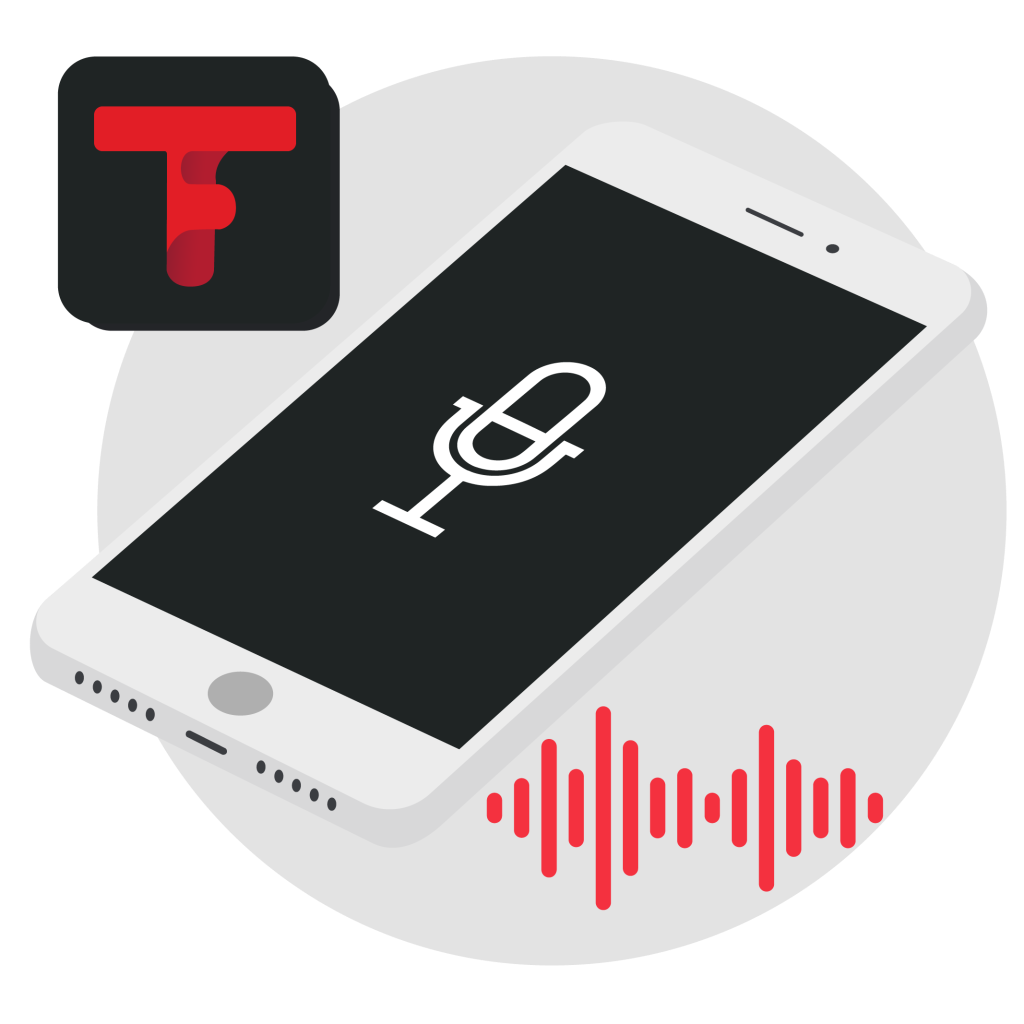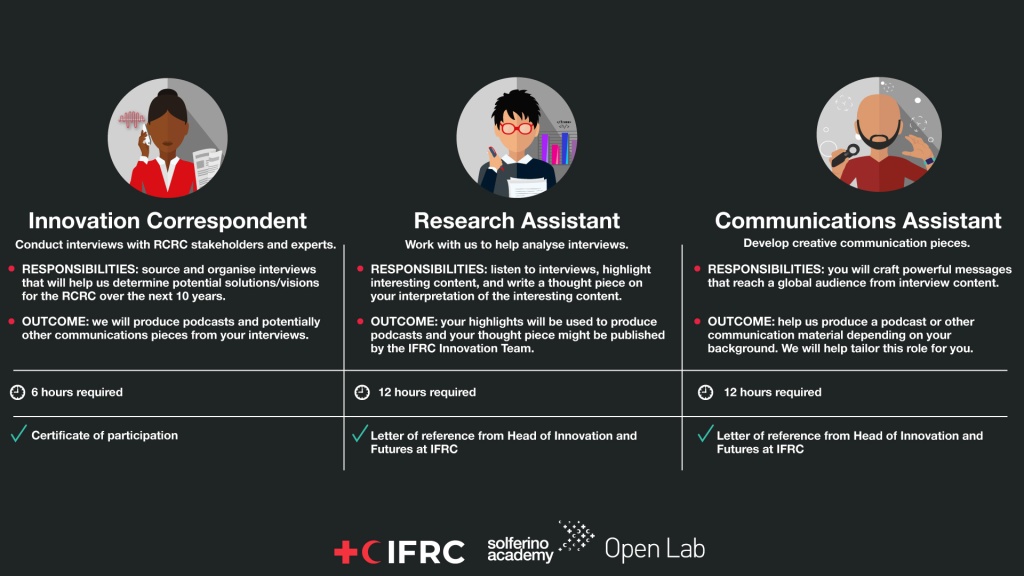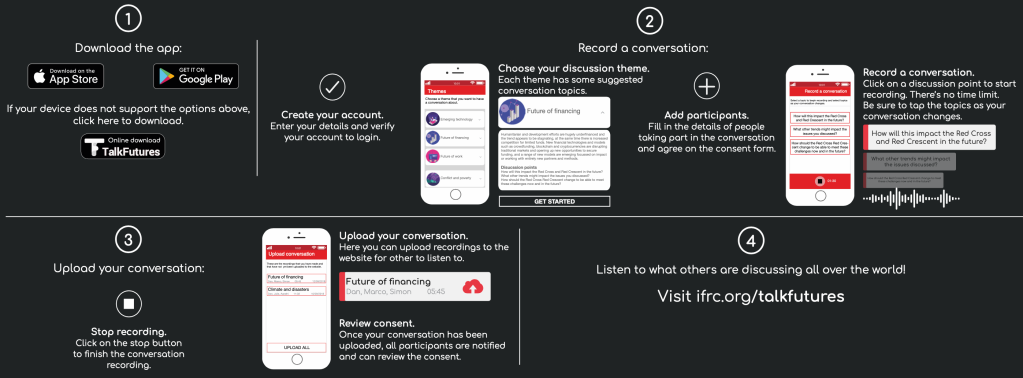Overview
In 2018, the International Federation of Red Cross and Red Crescent Societies (IFRC) and human-computer interaction (HCI) research group, Open Lab, at Newcastle University came together in an exploration journey. As part of IFRC’s strategic planning for 2030, the organisation underwent a series of research and engagement activities with its 192 national societies. Part of these activities included the involvement of local voices in collecting, analysing, and disseminating qualitative data. To do so, we created TalkFutures, a sociotechnical process designed to encourage participation in globally distributed community engagements. This processes resulted in the engagement of 467 participants from 81 countries producing and analysing content in four different languages. Their voices and views on the future were crucial in the development of the strategy that guides the Red Cross and Red Crescent network for the next decade.
The results of this project were published at the ACM Conference on Designing Interactive Systems 2020. Click here to read the research paper.

Design Motives
The IFRC, as the largest humanitarian network, mobilises almost 13 million volunteers worldwide through its 192 national societies. Each national society operates as an independent organisation with several layers of bureaucratic hierarchies that range from senior leadership through to local volunteers. Therefore, engaging with the different structures for strategic planning required an innovative and inclusive approach.
Building on previous engagements and recent literature, this project comprised of three overarching design goals. Firstly, going beyond data capturing and providing structured activities for local members to contextualise and cast their voices in the analysis process. Secondly, enabling digital spaces in which the geographical and technical barriers to engage with these participatory processes are reduced. Thirdly, improving transparent digital spaces where participants can follow and reflect on their contributions.

About TalkFutures
With TalkFutures, we configured the design of three unique roles to guide participation. First, the innovation correspondent role was entrusted with capturing local perspectives through semi-structured interviews. Second, the research assistant role was related to the sense-making of interview data. Third, the communications assistant role was responsible for curating insights from the two previous stages and create materials for dissemination.

Talkfutures was supported by an existing technology, Gabber, which we rebranded and adapted to support participation. The deployment lasted for four weeks in late 2018 with remote support and training from the TalkFutures team.
Through the TalkFutures mobile app, innovation correspondents conducted semi-structured interviews with members of their organisation and even with members in other national societies. These interviews were structured around themes of the IFRC’s strategy development consultations. Once recorded and approved by correspondents, interviews were automatically uploaded to a website for data sense-making and dissemination.

Those participants with a research assistant role listened to interviews, tagged them, and commented on interesting audio snippets to inform the creation of a position article. Position articles were also informed by other forms of digital content around the IFRC’s strategy development processes, such as videos and reports. The position articles were published on the IFRC’s strategy website, and their views were included in the finalised strategy.
Finally, communications assistants were in charge of distributing content from interviews and position articles using creative approaches. However, this role was the one with the least engagement from all three. This low engagement could have been due to the high technical expertise required or that the role depended on other participants’ contributions.
Learnings and personal reflections
Through this project, I learned about the benefits and challenges of exploring distributed community engagements. On the one hand, the structure of such process through different roles provided participants with multiple avenues for participation. By tapping into digital technologies, local members of the organisation were able to discuss and present their views on a global process. Perhaps most importantly, these local members drove the analysis process through their position articles and comments on their peers’ interviews. Not only did this deployment provide unique local perspectives, but also enabled a transparent process where all the content and concerns were open for anyone to engage and comment with the content.
On the other hand, configuring the process and providing remote support and training required a significant amount of work for the research team. A more extensive promotion campaign could have enhanced this process and a structure to support the participation of more communications assistants.
On a personal level, this project brought together a multidisciplinary team of researchers, programmers and designers from whom I learned inspiring forms of collaboration. It taught me the perks of complementing skills to design, prototype and deploy sociotechnical systems within short timelines. Finally, it reminded me that future democratic processes should further empower members at all levels of the system to uplift their voice and contribute. Technology indeed plays a significant role in this democratisation of power. However, members’ access and capacity to harness these technologies should be at the heart of the design process.
Leave a comment